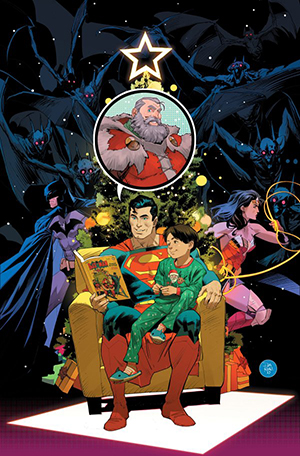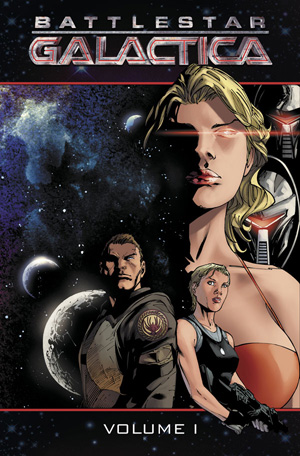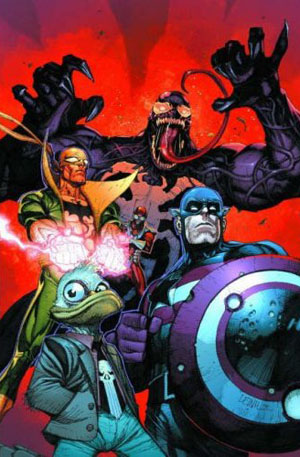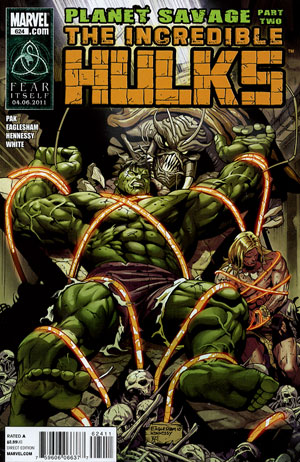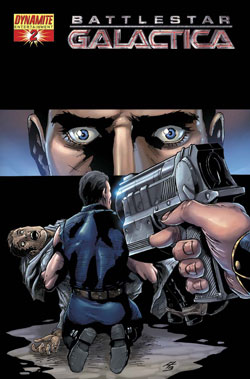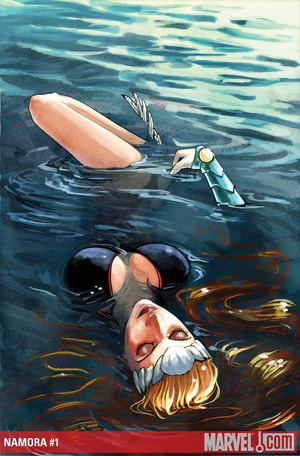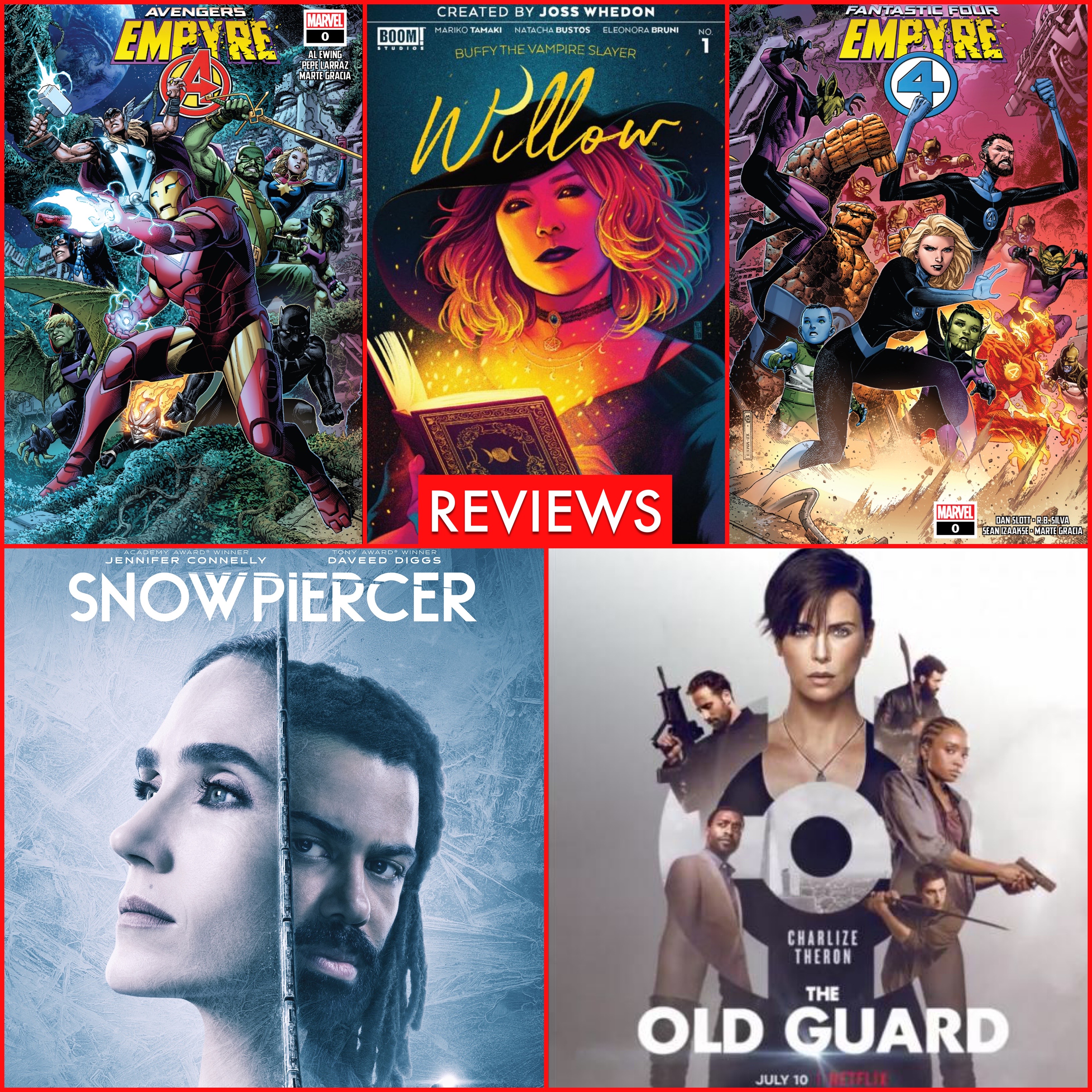|

|
HULK The Hulk (Dr. Robert Bruce Banner), sometimes referred to as The Incredible Hulk, is a fictional character, a superhero appearing in the Marvel Comics Universe. Created by Stan Lee and Jack Kirby, the Hulk first appeared in Incredible Hulk # 1 (May 1962). He has since become one of Marvel Comics' most recognized superhero characters.
After nuclear physicist Dr. Robert Bruce Banner was caught in the blast of a gamma bomb he created, he was transformed into the Hulk, a raging monstrosity. The character, both as Banner and the Hulk, is frequently pursued by the police or the armed forces, often as a result of the destruction he causes. While the coloration of the character's skin varies during the course of its publication history, the Hulk is most often depicted as green. The Hulk also has one son named Kluh.
He is featured in a number of animated series, a feature film directed by Ang Lee, and a long-running television series with spin-off television movies starring Bill Bixby as Banner and Lou Ferrigno as the Hulk.
Publication history
In the Hulk's debut appearance in The Incredible Hulk #1, the Hulk was gray rather than his longtime trademark green. That initial color choice was by writer and Marvel editor-in-chief Stan Lee, who wanted a color that did not suggest any particular ethnic group. Colorist Stan Goldberg, however, insisted to Lee that the coloring technology at the time could not present the color gray clearly or consistently, resulting in different shades of gray, and even green, in the issue. So in issue #2 and after, Goldberg colored the Hulk's skin green. Reprints and retellings of the Hulk's origin during the next two decades feature him with green skin from the beginning, but in 1986, issue #324 states that the Hulk had been gray at the time of his creation.
In early stories, Banner becomes the Hulk at sunset each day, but he later transforms whenever he becomes angry or panicked. Another method was shown in Fantastic Four #12 (March 1963), featuring the Hulk's first battle with The Thing; Banner uses a gamma ray machine of his own design to intentionally transform into the Hulk. Many early Hulk stories involve General Thaddeus "Thunderbolt" Ross trying to capture or destroy the Hulk with his U.S. Army battalion, the Hulkbusters, at his side. Ross' daughter, Betty, loves Banner and criticizes her father for pursuing the Hulk. General Ross' right-hand man, Major Glenn Talbot, also loves Betty and is torn between pursuing the Hulk and trying to gain Betty's love in a more honorable way. Rick Jones serves as the Hulk's friend and sidekick for a time. Later, another teenager, Jim Wilson, also befriends the Hulk.
The original series was canceled after six issues. Shortly afterward, co-creator Jack Kirby received a letter from a college dormitory stating the Hulk had been chosen as its official mascot.[citation needed] Kirby and Lee realized their character had found an audience in college-age readers. The Hulk had proven a saleable guest-star in three issues of Fantastic Four and an issue of The Amazing Spider-Man, and was included, however briefly, as a founding member of the superhero team the Avengers.
The Hulk starred again in his own feature in the "split book" Tales to Astonish, beginning with issue #60 (Oct. 1964), following his appearance the previous issue as the antagonist for GiAnt-Man, star of the book's other feature. These new stories were initially scripted by Lee and illustrated by the seldom-seen team of penciler Steve Ditko and inker George Roussos. Other artists later in this run included Jack Kirby from #68-84 (June 1965 - Oct. 1966), either as full pencils or, more often, else layouts for other artists; Gil Kane (making his Marvel Comics debut, under the pseudonym "Scott Edwards", in #76; Bill Everett (inking Kirby, #78-84); and John Buscema (one of his earliest Marvel assignments).
This early part of the Hulk's run introduced the Leader, who would become the Hulk's archnemesis, and additionally made the Hulk's identity known - initially only to the military.
Namor the Sub-Mariner received his first feature in a decade beginning with #70 (Aug. 1965). After the final issue of Tales to Astonish (which became the solo magazine The Incredible Hulk with issue #102),
After several years, the series was re-titled The Incredible Hulk due to the character's popularity (#102), and it ran under that name until March 1999, when Marvel restarted the series with a new issue #1.
Peter David became the writer of the series in 1986, beginning a run that lasted nearly 12 years. David's run altered Banner's pre-Hulk characterization and the nature of Banner and the Hulk's relationship. Originally, Banner was written as a normal but shy man whose negative emotions (the normal, repressed anger that all humans have) found expression through the Hulk; David, however, turned Banner into a victim of multiple personalities who had serious mental problems long before he became the Hulk. David expanded on an earlier story that establishes that Banner had suffered child abuse, writing that it fostered a great deal of repressed anger within the character, which in turn triggered a latent case of multiple personality disorder.[issue # needed] In issue #377, Doctor Leonard Samson engages the Ringmaster's services to hypnotize Bruce Banner and force him, the Savage Hulk (Green Hulk) and Mr. Fixit (Gray Hulk) to confront Banner's past abuse at the hands of his father, Brian Banner. Upon finally facing this abuse, a new, larger and smarter Hulk emerges and completely replaces the "human" Bruce Banner and Hulk personas. This Hulk is a culmination of the three aspects of Banner. He has the vast power of the savage, green Hulk, the cunning of the gray Hulk and the intelligence of Bruce Banner.
In 1998, David followed editor Bobbie Chase's suggestion to kill Betty Ross. In an interview in Wizard magazine,[issue # needed] David said that his wife had recently left him, providing inspiration for the storyline. Marvel executives used Ross' death as an opportunity to push the idea of bringing back the Savage Hulk. David disagreed, leading to his and Marvel's parting ways.
When David left the Hulk, Marvel hired Joe Casey as a temporary writer. Casey brought the character in the direction that Marvel had requested earlier[citation needed], making the Hulk mute, but his short run found little critical success,[citation needed] and he ended the series. Marvel then hired John Byrne for a second volume of the series, re-titled Hulk, with Ron Garney penciling. Byrne wrote of his plans for the first year,[citation needed] but creative differences led to his departure before the first year was over. Erik Larsen briefly filled scripting duties in his place, and the title of the book soon returned to The Incredible Hulk with the arrival of Paul Jenkins.
Jenkins wrote a story arc in which Banner and the three Hulks (Savage Hulk, Gray Hulk, and the Merged Hulk, now considered a separate personality and referred to as the Professor) are able to mentally interact with one another, each personality taking over their shared body. He also created John Ryker[citation needed], a ruthless military general in charge of the original gamma bomb test responsible for the Hulk's creation and planning to create similar creatures.
Bruce Jones followed as the series' writer, and his run features Banner using yoga to take control of the Hulk while pursued by a secret conspiracy and aided by the mysterious Mr. Blue. Jones focused on a horror theme with the Hulk as a fugitive, influenced by the classic TV series. He appended his 43-issue Incredible Hulk run with the Hulk/Thing: Hard Knocks limited series, which Marvel published after putting the ongoing series on hiatus.
Peter David, who had initially signed a contract for a six-issue Tempest Fugit limited series, returned as writer when it was decided to make the story part of the ongoing series instead. David contracted to complete a year on the title. Tempest Fugit reveals that Nightmare has manipulated the Hulk for years, tormenting him in various ways for "inconveniences" that the Hulk had caused him. After a four-part tie-in to the House of M crossover and a one-issue epilogue, David left the series once more, citing the need to do non-Hulk work for his career's sake.
Planet Hulk
In the 2006 storyline "Planet Hulk" by Greg Pak, after the Hulk destroys much of Las Vegas, a secret group of superheroes called the Illuminati trapped the Hulk and rocketed him into space to live a peaceful existence on a planet uninhabited by intelligent life. After a trajectory malfunction, the Hulk travels through a wormhole and crashes on the violent planet Sakaar. Weakened by his journey through the wormhole, the Hulk is sold as a slave. In a gladiatorial arena, he makes a deadly enemy when he scars the emperor's face. The Hulk overcomes great odds to become a gladiator, a rebel leader and a conqueror. Marvel Editor-in-Chief Joe Quesada announced in 2006 that beginning with May 2007 comics, the Hulk will be the focus of the Marvel crossover event World War Hulk.
The Hulk is the alter ego of Dr. Robert Bruce Banner, a genius in nuclear physics. As a result of exposure to gamma radiation, Banner often becomes a large, superhumanly strong green creature. Although the Hulk is usually classified as a superhero, he and Banner share a Jekyll and Hyde-like relationship. In his most well-known incarnation, the Hulk has little intelligence or self-control, and can cause great destruction. As a result, he has been hunted by the military and other superheroes, and as such, Banner considers the Hulk a curse. The transformation is usually triggered by emotional stress, but at times has been initiated by radiation or other factors, and even at will in later incarnations of the character.
The Hulk initially was characterized as a separate entity from Bruce Banner, a symbol of inner rage and Freudian repression; a distillation of his anger that gradually developed its own personality and memories separate from Banner's.
Due to retroactive continuity established by writers Bill Mantlo and later Peter David in the 1980s, Banner is said to suffer from multiple personality disorder, which stems from the child abuse he had suffered early in life. The Hulk has many incarnations, each representing a different aspect of Banner's psyche.
Bruce Banner
The core personality, an emotionally-suppressed genius, rating amongst Reed Richards and Tony Stark as one of the greatest minds in the Marvel Universe. Banner can transform into the different versions of the Hulk, whereas his alter-egos seem to be able only to transform into Bruce Banner. These transformations are usually involuntary, as is the selection of which one emerges.
Savage Hulk
The "classic" Hulk, the Savage Hulk possesses the mental capacity and temperament of a young child, and typically refers to himself in the third person. The primary drive of the Savage Hulk (other than utterly destroying anything that angers him) is the urge to "get away" and "to be left alone." Indeed, it has been proposed that if the authorities simply let the Savage Hulk escape to the wilderness and isolation he desires, that much less damage would result, as any attack simply angers him further and increases his strength. Characterised by his extraordinarily bulky, muscular physique, his green skin and his loping, ape-like gait, the Savage Hulk is instantly recognisable. Since the Hulk's (all versions) strength is directly proportional to his rage, this is possibly the most powerful incarnation as it possesess extremely little self-control. Indeed, it was so strong that when "freed" from Bruce Banner by Jean Grey it was able to go head-to-head with the psychic being Onslaught.
Gray Hulk/Joe Fixit
The Gray Hulk (though possibly not the original) worked for a time as a Las Vegas enforcer called Joe Fixit. He has average intelligence, although he occasionally displays knowledge and intellectual ability normally associated with Bruce Banner. He is hedonistic, cunning, arrogant, crafty, and distant with a hidden conscience. In most of his Las Vegas appearances, he appears only at night. According to the Leader in Incredible Hulk Vol. 1, #333, the Gray Hulk persona is strongest during the night of the new moon and weakest during the full moon; this aversion to sunlight and moonlight vanished when the Gray Hulk's night-induced transformation trigger is later removed. Although he is the smallest of the Hulks, the Gray Hulk towers over the average human. He prefers to dress in tailored suits. The Gray Hulk's base strength level is the lowest of all the "Hulk incarnations". However, this strength level can grow as he gets angry, but at a much slower pace than the other "Hulk incarnations." Despite his lower strength, Gray Hulk is able to use cunning and strategy in fights to gain the upper hand against foes expecting a savage Hulk.
Merged Hulk/The Professor
The merger of Bruce Banner and the Savage and Gray Hulks in Incredible Hulk #377 (written by Peter David). The Merged Hulk is later ret-conned into The Professor. The Professor, rather than being a merger of the three core personalities, was interpreted as a fourth, separate personality that represented Banner's ideal self. The primary difference between the two is that the Merged Hulk demonstrated aspects of the Banner, Grey Hulk, and Savage Hulk personalities (also possessing Banner's intelligence, Joe Fixit's cunning, and the Savage Hulk's size and strength), while the Professor did not. The Merged Hulk is even prone to uttering "Hulk smash!", which is the Savage Hulk's most common catchphrase. The Merged Hulk is an associate and leader of the team of superheroes called the Pantheon. Despite his exaggerated musculature, the Merged Hulk had a relatively normal-looking face, resembling that of Bruce Banner, and straight-backed posture that gives him the appearance of being the tallest and least beastial Hulk incarnation. The Professor personality is defined during Paul Jenkins' run as a "revelation" that the Merged Hulk is not actually a merger of the three personalities but rather a separate personality altogether. Unlike the Merged Hulk, the Professor is physically distinguished by having a pony tail, which the Merged Hulk did not. Jenkins justified this by ret-conning into the Hulk's continuity a new character named Angela Lipscomb (modeled after Jenkins' own girlfriend) who knew more about Bruce Banner than even Doc Samson. Lipscomb confronted Doc Samson with her observations of the Professor and Doc Samson validated them, despite events presented in previous issues to the contrary. However, his intelligence makes it impossible for him to reach the rage and power level of the Savage Hulk.
Mindless Hulk
After the Hulk confronted Nightmare, a new personality began to develop out of Banner's worst visions of the Hulk. This new Hulk was based on a dark Image made of all of Banner's worst fears and the worst possible vision of the Hulk he could imagine. It is unknown whether this new Hulk was created by Nightmare or by Banner's will power, which was strong among all Secret Wars participants. It became its own personality after Banner made his "psychic suicide", allowing it to break free of Banner's domination. Eventually, with the assistance of three creatures created by his subconscious, (Glow, Goblin, and Guardian), this Hulk gained the ability to speak and behave much less savage. Since then, this personality has not been seen again, and it has been suggested that it is no longer a part of Banner's personality. Some have suggested that the Mindless Hulk represents' Banner's babyhood. In "Web of Spider-Man #7", a part of the Hulk, with the assistance of Doctor Strange, entered the Dimension of Nightmare as a similar manifestation as Mindless Hulk, threatening to kill him. Nightmare was forced to seek out Spider-Man's help, as this Hulk was destroying the whole domain. Spider-Man eventually pushed the Hulk into another realm, but he pulled Nightmare in with him. Nightmare has since been seen still alive, but this Hulk seems to have disappeared.
Powers and abilities
The Hulk possesses incredible levels of physical strength. According to Marvel, the Hulk's "capacity for physical strength is potentially limitless due to the fact that his strength increases proportionally with his level of emotional stress, anger in particular" The most well-known incarnation, the Savage Hulk, possesses the greatest potential for immeasurable superhuman strength, again depending on his emotional state, spawning the famous quote: "the madder Hulk gets, the stronger Hulk gets." The Hulk is capable of supporting, with the assistance of leverage, a 150 billion ton mountain range while in an enraged emotional state. During combat with the psionic entity known as Onslaught, Jean Grey psionically disables Bruce Banner's persona, bringing out the true Savage Hulk. While trading punches with the Hulk, the psionic being Onslaught angers him to a point where he was able to break through Onslaught's armor. The Hulk has also been shown shattering an asteroid twice the size of Earth with a single punch. The Hulk possesses highly developed leg muscles and is able to leap several miles at a time. Since the Hulk's strength increases with anger, he is able to leap distances much greater than he normally could while in a "calm" state. For instance, he has been shown covering a distance of 1,000 miles in a single leap and even leaping into a low-Earth orbit. There are examples of the Leader and Doc Samsonattempting, unsuccessfully, to measure the limits of the Hulk's strength using the advanced technology at their disposal.
The Hulk is depicted with extremely high levels of superhuman stamina and resistance to physical injury. He's been shown withstanding the impact of high-caliber artillery shells, falls from orbital heights, and powerful energy blasts without sustaining injury and resisting extreme temperatures, poisons, and diseases with no ill effect. The Hulk is capable of surviving a ground zero nuclear explosion. Despite his body's high resistance to injury, it is possible to injure the Hulk. He has been injured numerous times by opponents using weapons composed of adamantium.
However, the Hulk can regenerate damaged or destroyed tissue with far greater efficiency than an ordinary human. He has proven capable of regenerating all of his skin and most of his muscle tissue, after having them flayed from his body, within a few minutes.. The Hulk is also extremely resistant but not impervious to drugs, although his near-impenetrable skin makes gas a more reliable method of administering them. He can also be immobilized, put to sleep, or transformed into Banner or pacified against his will. Either by the use magic or radiation emitted by other individuals, like the Missing Link or Robert Reynolds.
It has also been stated that the Hulk's durability(resistance to physical injury), stamina and the efficiency of his healing Powers fluctuates with his emotional state, much like his physical strength.
In addition to his physical power and healing ability, the Hulk has demonstrated the ability to "home in" on the desert base where he was empowered. He also has a unique ability to see and hear spectres, such as the astral form of Doctor Strange.
This article uses material from Wikipedia and is licensed under the GNU Free Documentation License.All material is compiled from numerous sources and may not be accurate. Dynamic Forces, Inc and all of its subsidiaries cannot guarantee the validity of the content. |
 |



